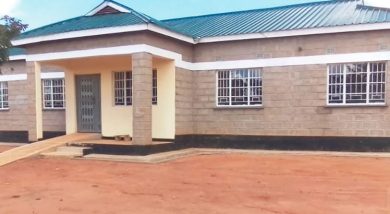Egenco restores 46MW to national power grid
Electricity Generation Company (Egenco) has restored 46 megawatts (MW) of electricity to the national grid, in the process reducing the 121.2MW deficit it announced last week due to broken down generation equipment.
In an ideal situation, the reduction in electricity output deficit should have meant reduced hours of load shedding for consumers as effected by Electricity Supply Corporation of Malawi (Escom). However, spot-checks in most areas at the weekend indicated that consumers were enduring more than the stated four-and-half hours of power rationing.

Escom public relations manager Innocent Chitosi on Sunday asked for a questionnaire on the situation. However, by press time at 8pm he was yet to respond to the questionnaire.
But in an interview, Egenco spokesperson Moses Gwaza described the reduction in the deficit as positive, saying it may lead to a reduction in load shedding hours.
He said: “What this means is that load shedding should be reducing. By how much? Escom is better-placed to say. But at the same time, we have also seen [diesel-powered] generators back online at Mapanga.”
Egenco has restored one of the three power generation machines each with 32MW capacity at Kapichira Hydro Power Station in Chikwawa. The company has also fixed seven of the two megawatts each generators at Mapanga Substation in Blantyre.
Besides power from Egenco as its main supplier, Escom also gets power from the 78MW Aggreko diesel-powered generators to cushion consumers from prolonged blackouts.
Initially, the Aggreko generators were planned to operate six hours a day and Chitosi could not indicate the total output from the same, saying production is determined by forces of demand and supply.
But in a separate interview yesterday, Consumers Association of Malawi (Cama) executive director John Kapito said consumers have lost trust in the power companies. He said they have been making empty statements on the electricity situation.
“These piecemeal developments on electricity generation with its frequent promises have made consumers lose trust. As consumers, all we need is electricity at all times,” he said.
In the wake of the power generation deficit, Escom last Monday started implementing a load shedding programme that split its customers into three groups—A, B and C. The load shedding hours are split from 8am to 12:30pm, 11:30am to 4pm and 3pm to 7:30pm.
However, spot-checks The Nation conducted over the weekend in parts of Blantyre, Lilongwe, Mzuzu and Zomba, showed a mixed picture of the load shedding situation.
Our findings established that while in areas such as Chirimba, Chileka and Bangwe in Blantyre; Biwi, Area 25, Likuni, Kawale and Chipasula in Lilongwe customers are experiencing extended load shedding hours of up to five to six hours, customers in some areas in Mzuzu such as Luwinga, Masasa and Katoto are experiencing less hours of the blackouts.
In Zomba, areas such as Kalimbuka, Thondwe and Changalume customers are experiencing the exact hours of load shedding or with a 30 to 40 minutes extension.
Malawi continues to face power supply challenges from the national grid despite licensing a number of independent power producers (IPPs).
While most of the licensed IPPs are yet to roll out, some of them, including one each in Dedza and Salima, were expected to roll out by August last year and are yet to add their power to the national grid.
In December 2019, demand for electricity during peak hours stood at 303.1MW. Egenco generates most of its power through hydro with 136MW from Nkula Hydro Power Station (A and B), 102MW from Tedzani (I, II and III), Kapichira 129.6MW and Wovwe 4.5MW. Diesel generators have the capacity of 52.85MW.





